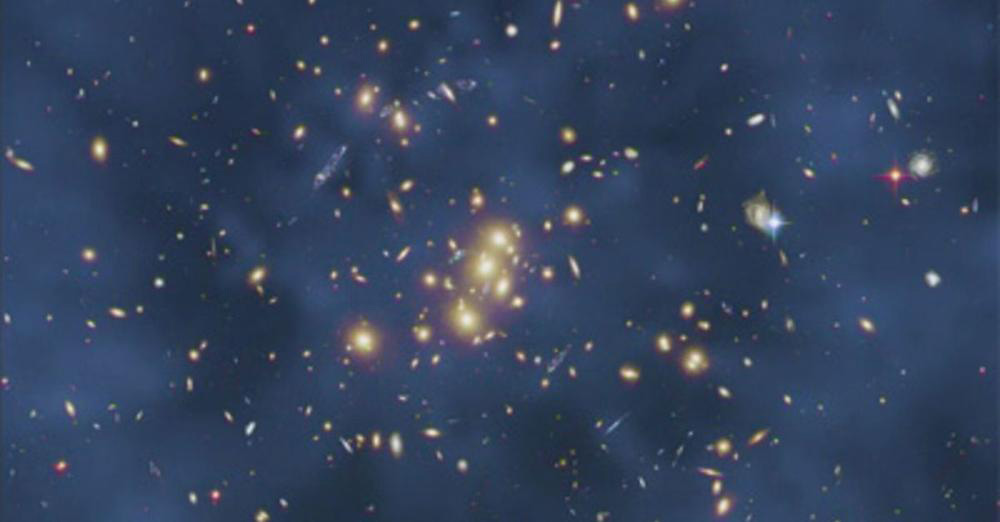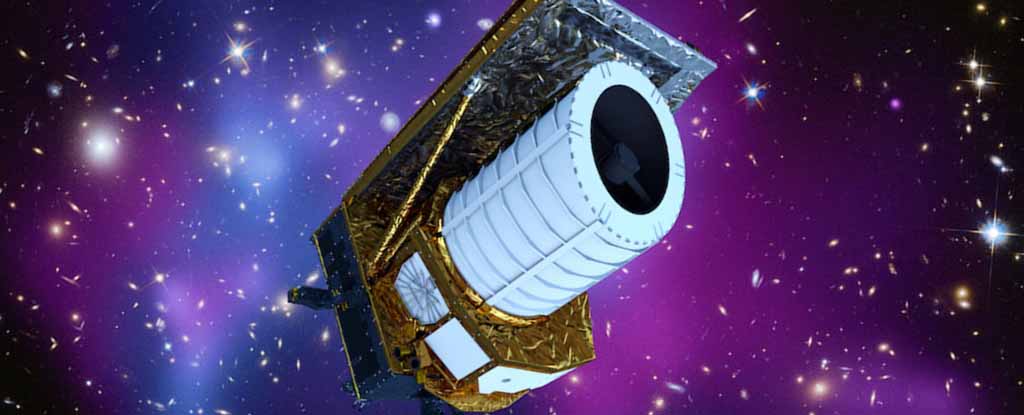We emerged from Dark Matter and so we shall return.



We emerged from Dark Matter and so we shall return.



Euclid space telescope: The groundbreaking mission to study dark matter and energy Live Science - July 6, 2023

The Euclid space telescope uses its incredibly wide field of view to hunt for two of the universe's most mysterious components: dark matter and dark energy.
An alternative approach to the detection of dark matter particles in nature is to produce them in a laboratory. Experiments with the Large Hadron Collider (LHC) may be able to detect dark matter particles produced in collisions of the LHC proton beams. Because a dark matter particle should have negligible interactions with normal visible matter, it may be detected indirectly as (large amounts of) missing energy and momentum that escape the detectors, provided other (non-negligible) collision products are detected. Constraints on dark matter also exist from the LEP experiment using a similar principle, but probing the interaction of dark matter particles with electrons rather than quarks. Any discovery from collider searches must be corroborated by discoveries in the indirect or direct detection sectors to prove that the particle discovered is, in fact, dark matter.
Could the LHC discover dark matter? Space.com - July 5, 2022
With the switching back on of CERN's Large Hadron Collider (LHC) after a three-year hiatus, the giant particle accelerator has a new target set in its sights: the hunt for dark matter, the mysterious substance that must make up about 80% of all the matter in the universe, but which no one has ever seen. It's an astounding fact that the vast majority of matter in the universe is actually invisible to us. Astronomers think that dark matter must be present because they see its gravitational fingerprints. Dark matter is the invisible cosmic scaffold that holds together galaxies and galaxy clusters. We just don't know what it is. Intriguingly, experiments on the smallest scales at the Large Hadron Collider could hold the key to figuring out one of the largest-scale cosmological mysteries of all.
Scientists have begun major search for universal dark matter in mile-deep abandoned gold mine in South Dakota Just the News - July 8, 2022
Researchers at the Sanford Underground Research Facility are hoping to reveal the properties of dark matter, a substance scientists cannot see but which equations indicate form a huge majority of the total matter in the universe.
The facility is located a mile underground in the former Homestake Gold Mine in Lead, South Dakota. The depth of the facility was necessary in order to filter out electromagnetic background disturbance from the sun and other cosmic factors.
Dark matter is a hypothetical form of matter thought to account for approximately 85% of the matter in the universe. Dark matter is called "dark" because it does not appear to interact with the electromagnetic field, which means it does not absorb, reflect, or emit electromagnetic radiation (like light) and is, therefore, difficult to detect. Various astrophysical observations - including gravitational effects which cannot be explained by currently accepted theories of gravity unless more matter is present than can be seen - imply dark matter's presence. For this reason, most experts think that dark matter is abundant in the universe and has had a strong influence on its structure and evolution.
The primary evidence for dark matter comes from calculations showing that many galaxies would behave quite differently if they did not contain a large amount of unseen matter. Some galaxies would not have formed at all and others would not move as they currently do. Other lines of evidence include observations in gravitational lensing and the cosmic microwave background, along with astronomical observations of the observable universe's current structure, the formation and evolution of galaxies, mass location during galactic collisions, and the motion of galaxies within galaxy clusters. In the standard Lambda-CDM model of cosmology, the total mass-energy content of the universe contains 5% ordinary matter and energy, 27% dark matter, and 68% of a form of energy known as dark energy.Thus, dark matter constitutes 85% of the total mass, while dark energy and dark matter constitute 95% of the total mass-energy content.
Because no one has directly observed dark matter yet - assuming it exists - it must barely interact with ordinary baryonic matter and radiation except through gravity. Most dark matter is thought to be non-baryonic; it may be composed of some as-yet-undiscovered subatomic particles. The primary candidate for dark matter is some new kind of elementary particle that has not yet been discovered, particularly weakly interacting massive particles (WIMPs), though axions have drawn renewed attention due to the non-detection of WIMPs in experiments. Many experiments to directly detect and study dark matter particles are being actively undertaken, but none have yet succeeded.